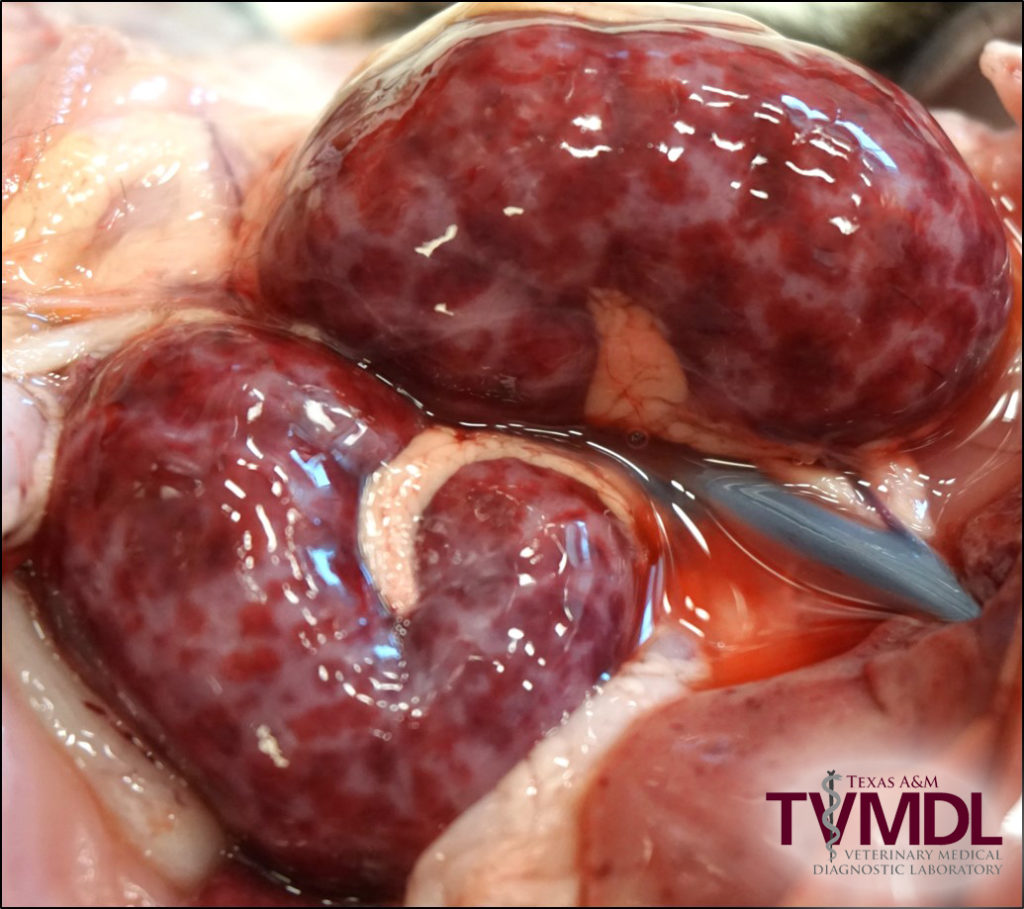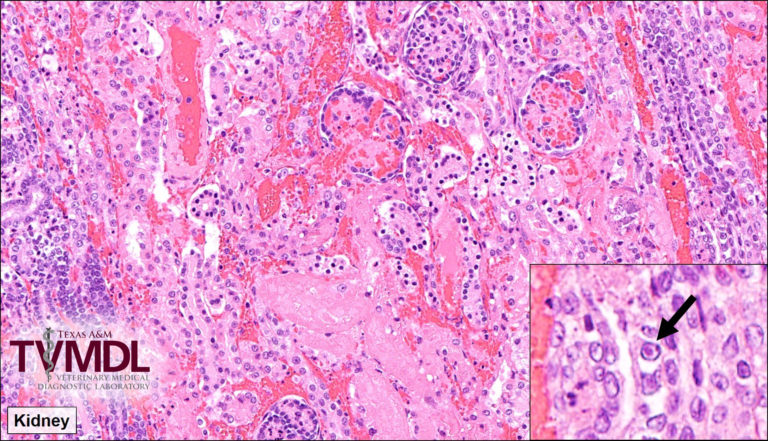Two Presa de Canario puppies from a litter of eight were submitted to the Texas A&M Veterinary Medical Diagnostic Laboratory (TVMDL) for necropsy. These puppies were estimated to be approximately 1 to 2 weeks old. A total of six puppies from this litter had died, amounting to a mortality rate of 75%. Some puppies were found dead with no clinical signs, while others stopped eating with death ensuing 12 to 24 hours later.
At necropsy, both puppies had similar lesions. The most striking change was multifocal to coalescing ecchymotic hemorrhages throughout the kidneys bilaterally. In one puppy, this change was so severe that nearly the entire kidney was hemorrhagic (Figure 1). Both puppies also had petechial hemorrhages throughout the liver and intestines and one puppy had a mild pneumonia. Tissues from one puppy were fixed in formalin and submitted for histopathologic examination which showed corresponding lesions of multifocal to coalescing necrohemorrhagic nephritis (Figure 2), multifocal necrohemorrhagic hepatitis, and multifocal fibrino necrotizing pneumonia. Rare intranuclear inclusion bodies consistent with herpesvirus were seen in all affected organs (Figure 2). The macroscopic and microscopic lesions in these cases are classic for canine herpesvirus infection.
Canine herpesvirus causes systemic necrosis and hemorrhage in neonatal puppies with a high mortality rate. This disease should always be considered a major differential diagnosis in litters with multiple fatalities. Puppies can be infected in utero following infection of a naïve dam, during parturition, or following direct exposure to the virus during the first few weeks of life. Puppies aged 1-4 weeks old are the most susceptible to this disease but seldom cases are seen in puppies up to 8 weeks old. Adult dogs typically do not develop clinical symptoms from infection but can occasionally have mild upper and/or lower respiratory disease, also characterized by hemorrhage and necrosis. In puppies, the most characteristic lesion seen at necropsy is disseminated petechial to ecchymotic renal hemorrhage. Available confirmatory diagnostic tests include PCR and histopathology, though viral inclusions are sometimes difficult to find histologically.

